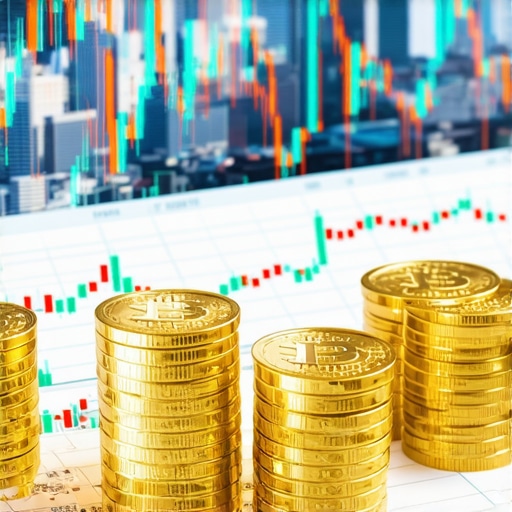Understanding the Gold Market Landscape in 2025
The gold market has long been a focal point for investors seeking stability and wealth preservation, especially in uncertain economic climates. As we look towards 2025, it’s crucial to analyze key indicators that will shape the gold market, providing insights for both seasoned investors and newcomers alike. This analysis will delve into various factors that influence gold prices, including supply and demand dynamics, geopolitical events, and market trends.
Key Supply and Demand Indicators
One of the fundamental aspects of any market is the relationship between supply and demand. In the gold market, fluctuations in supply can significantly impact prices. For instance, the production rates of gold mining companies will play a pivotal role in determining the available supply. Investors should keep an eye on major gold-producing countries and the output levels reported by leading mining companies. Additionally, shifts in consumer demand, driven by cultural factors, jewelry markets, and industrial applications, can greatly influence gold pricing. Understanding gold supply and demand trends is essential for making informed investment decisions.
Geopolitical Events and Economic Factors
Geopolitical tensions and economic events are significant drivers of gold prices. Historically, gold has been viewed as a safe-haven asset during times of uncertainty. As we approach 2025, it’s vital to monitor global events that could impact investor sentiment and market stability. For example, changes in government policies, trade agreements, and economic sanctions can lead to increased demand for gold as a hedge against economic turmoil. Furthermore, keep an eye on inflation rates and interest rate policies from central banks, which can also affect the attractiveness of gold as an investment. An in-depth look at how central bank purchases impact gold prices will enhance your understanding of these dynamics.
The Impact of Technological Advancements
Technological advancements are reshaping the gold market, influencing both production and consumption. Innovations in mining technology can lead to more efficient extraction processes, potentially increasing supply. On the other hand, advancements in financial technology, such as cryptocurrency and blockchain, could alter the way investors perceive gold, possibly affecting demand. Investors should stay informed about these trends and consider their implications for the future of gold investments. Exploring innovative ways to invest in gold will provide valuable insights into adapting to the evolving market landscape.
Conclusion: Preparing for Gold Investment in 2025
As the gold market evolves, staying informed about key indicators is vital for successful investment strategies. By understanding the interplay of supply and demand, geopolitical events, and technological advancements, investors can navigate the complexities of the gold market in 2025. Whether considering traditional gold investments or exploring new avenues, knowledge and vigilance will be key to capitalizing on opportunities in this precious metal market.
Current Trends in Gold Investment Strategies
As we move further into 2025, adapting to current trends in gold investment is crucial for maximizing returns. Investors are increasingly looking at diversified strategies that incorporate various forms of gold investments. From traditional gold bullion to modern gold ETFs, understanding these options allows for a more robust portfolio. The best gold investment strategies can provide a roadmap for enhancing wealth through strategic asset allocation.
Exploring Gold ETFs and Their Benefits
Gold Exchange-Traded Funds (ETFs) have gained popularity among investors looking for a low-cost way to invest in gold without the need for physical storage. These financial instruments offer liquidity and flexibility, making them an attractive option for both new and seasoned investors. As more individuals turn to gold ETFs, understanding their structure and benefits is essential for informed decision-making.
Physical Gold vs. Digital Investments
The debate between investing in physical gold versus digital assets continues to evolve. Physical gold, such as bars and coins, provides a tangible asset that many investors value for its intrinsic worth. Conversely, digital gold investments, including ETFs and gold-backed cryptocurrencies, offer convenience and ease of trading. Evaluating the physical gold vs. gold ETFs dilemma can help investors choose the best approach for their financial goals.
Risk Management in Gold Investments
As with any investment, risk management is key to successful gold investing. Understanding market volatility and potential risks associated with gold investments can help mitigate losses. Investors should consider diversifying their portfolios not just with gold, but also with other asset classes to balance risk. Strategies such as gold trading strategies can aid in managing these risks effectively.
Monitoring Global Economic Indicators
Staying aware of global economic indicators is vital for predicting gold market movements. Factors such as inflation rates, interest rates, and geopolitical tensions can influence gold prices significantly. By monitoring these indicators, investors can make timely adjustments to their strategies, ensuring they remain aligned with market conditions. Resources like gold price forecasts can provide valuable insights into future trends.
Long-term vs. Short-term Strategies
The choice between long-term and short-term investment strategies can greatly affect the outcomes for gold investors. Long-term strategies often focus on the inherent value of gold as a hedge against inflation and economic downturns, while short-term trading may capitalize on market fluctuations. Each approach has its merits, and understanding which strategy aligns with individual financial goals is crucial. Articles on diversifying with gold can shed light on how to effectively integrate gold into broader investment strategies.
Future Outlook for Gold Investments
Looking ahead, the future of gold investments in 2025 appears promising, driven by ongoing economic uncertainties and a growing recognition of gold’s role in a diversified portfolio. As trends shift and new investment vehicles emerge, staying informed will be key to leveraging opportunities in the gold market. Engaging with resources such as insights for savvy investors can enhance understanding and strategy formulation for navigating the evolving landscape.
Understanding the Role of Gold in Economic Uncertainty
Gold has historically been viewed as a safe-haven asset during times of economic uncertainty. As inflation rises and geopolitical tensions escalate, investors are turning to gold to preserve their wealth. This trend highlights the importance of integrating gold into financial portfolios. Recognizing gold’s role in mitigating risk can enhance investment strategies, especially in volatile markets.
Impact of Inflation on Gold Prices
Inflation is a critical factor influencing gold prices. As currency values decline, the demand for gold often increases, driving prices higher. Investors should keep an eye on inflation trends to make informed decisions regarding their gold investments. Understanding this relationship can also help in timing purchases and sales to maximize returns.
Geopolitical Factors Affecting Gold Demand
Geopolitical events, such as conflicts and trade disputes, can significantly impact gold demand. During crises, investors often flock to gold as it tends to retain value when other assets falter. Keeping abreast of current events and analyzing their potential effects on gold prices is crucial for investors. Resources like gold price analysis can provide insights into these trends.
Investing in Gold Mining Stocks
Another avenue for gold investment is through mining stocks. Investing in companies that mine gold can offer exposure to the metal without having to purchase physical gold. However, this approach comes with its own set of risks, including operational and market risks. Evaluating mining stocks requires a thorough understanding of both the gold market and the mining industry.
Assessing Mining Stocks for Long-term Growth
When considering gold mining stocks, it’s essential to analyze the company’s financial health, production costs, and management team. Companies with strong fundamentals and efficient operations are likely to perform better, especially when gold prices rise. Investors should look for best-performing gold stocks that demonstrate resilience and growth potential.
Risks Associated with Gold Mining Investments
While investing in gold mining stocks can yield significant returns, it also carries risks such as fluctuating gold prices and operational challenges. Investors must conduct comprehensive research and consider diversifying their portfolio to manage these risks effectively. Understanding these risks is essential for making sound investment decisions.
Utilizing Gold for Retirement Planning
Incorporating gold into retirement strategies, such as a Gold IRA, can provide additional security and diversification. By allocating a portion of retirement funds to gold, investors can safeguard against market downturns. Learning about Gold IRAs can help individuals make knowledgeable decisions regarding their retirement savings.
Benefits of Gold in a Retirement Portfolio
Gold can act as a hedge against inflation and economic instability, making it a valuable component of any retirement portfolio. Its historical performance during crises adds to its appeal for long-term investors. Engaging with resources that discuss gold’s protective role can enhance understanding of how to leverage this asset effectively.
Gold Trading Techniques for Maximizing Returns
Mastering effective gold trading techniques is crucial for investors looking to enhance their returns. Various methods exist, ranging from day trading to long-term holding strategies. Each technique has its own set of advantages and can be tailored to individual investment goals. Understanding these methods can help investors make informed decisions in the dynamic gold market.
Day Trading Gold: Short-Term Strategies
Day trading involves buying and selling gold within the same trading day, capitalizing on short-term price movements. Successful day traders rely on technical analysis and market indicators to identify profitable opportunities. For those interested in this approach, resources like navigating gold trading techniques can provide valuable insights.
Long-Term Holding: A Strategy for Stability
For investors seeking to ride out market fluctuations, a long-term holding strategy may be more suitable. This approach involves purchasing gold and holding it for an extended period, allowing for potential appreciation over time. Investors should consider the historical performance of gold and factors such as price predictions when opting for this strategy.
Diversifying with Gold ETFs and Mutual Funds
Investing in gold exchange-traded funds (ETFs) or mutual funds can offer an effective way to diversify a portfolio without the need to manage physical gold. Gold ETFs provide exposure to gold prices, while mutual funds may invest in a range of gold-related assets. Understanding the differences between these investment vehicles can help investors determine the best fit for their financial goals.
The Advantages of Gold ETFs
Gold ETFs are known for their liquidity and ease of access. They can be bought and sold like stocks, making them a convenient option for investors. Moreover, ETFs typically have lower management fees compared to mutual funds, making them an attractive choice for cost-conscious investors. For more information on selecting the right ETFs, visit top gold ETF picks.
Investing in Gold Mutual Funds: Pros and Cons
Gold mutual funds can offer exposure to a diversified portfolio of gold-related investments, such as mining stocks and gold bullion. However, they often come with higher fees and may not provide the same level of liquidity as ETFs. Investors should weigh these factors carefully and consider their investment horizon before choosing mutual funds as part of their gold investment strategy.
Understanding the Role of Gold Trading Techniques
Effective gold trading techniques are essential for navigating market volatility and maximizing investment returns. By combining different strategies and remaining informed about market trends, investors can enhance their ability to make profitable trades. Resources like gold trading strategies can offer further guidance on developing a robust trading plan.
Comprehensive FAQ Section on Gold Trading Techniques
What are the best gold trading techniques for beginners?
For beginners, the best gold trading techniques include starting with a long-term holding strategy, utilizing gold ETFs for diversification, and learning technical analysis for short-term trading. It’s essential to educate oneself about market trends and to start with a small investment to minimize risk.
How do gold trading techniques differ from other commodity trading?
Gold trading techniques are often centered around market sentiment and economic indicators that uniquely affect gold prices, such as inflation rates and geopolitical stability. In contrast, other commodities may be influenced more heavily by supply and demand dynamics and agricultural cycles.
Can I trade gold without owning physical gold?
Yes, you can trade gold through various financial instruments such as gold ETFs, futures contracts, and options. These methods allow you to speculate on gold prices without the need to own physical gold, making it easier and often more cost-effective.
What are the risks involved in gold trading?
The primary risks in gold trading include market volatility, geopolitical factors, and changes in currency values. Additionally, if you’re trading derivatives like futures or options, you may face leverage risks that could amplify losses.
How can I stay informed about gold market trends?
Staying informed about gold market trends can be achieved through financial news outlets, subscribing to gold market newsletters, and following expert analyses on reputable investment websites. Engaging in gold trading communities can also provide valuable insights.
Is day trading gold a profitable strategy?
Day trading gold can be profitable, but it requires a deep understanding of the market, quick decision-making skills, and the ability to manage risk effectively. Many day traders use technical indicators and charts to guide their trading decisions.
What are gold options and how do they work?
Gold options are contracts that give traders the right, but not the obligation, to buy or sell a certain amount of gold at a predetermined price before a specified expiration date. They can be used to hedge against price fluctuations or to speculate on price movements.
How often should I review my gold trading strategy?
It’s advisable to review your gold trading strategy regularly, especially in response to significant market changes or personal investment goals. Regular assessments help ensure that your strategy remains aligned with market conditions and your financial objectives.
Can gold trading techniques be applied to other precious metals?
Yes, many gold trading techniques, such as technical analysis and risk management strategies, can be effectively applied to other precious metals like silver, platinum, and palladium. However, it’s crucial to understand the unique market dynamics of each metal.
What role does economic data play in gold trading?
Economic data, such as inflation rates, employment figures, and central bank policies, play a significant role in gold trading as they influence investor sentiment and demand for gold. Positive economic data may lead to lower gold prices, while negative data can increase its appeal as a safe-haven asset.
Authority Resources for Gold Trading Techniques
To deepen your understanding of gold trading techniques and stay updated on market trends, consider the following authoritative resources:
- Kitco News – A leading source for precious metals market news and analysis.
- World Gold Council – Provides research and insights into the gold market and its role in investment portfolios.
- Investopedia – Offers educational articles on gold trading and investment strategies.
- MarketWatch – Features market news, including updates on gold prices and trading strategies.
- Bloomberg Commodities – Delivers real-time data and news on commodity markets, including gold.
Conclusion: Embracing Gold Trading for Financial Success
In conclusion, mastering gold trading techniques is vital for investors aiming to maximize their returns in today’s volatile market. By understanding various strategies, from day trading to long-term holding, and utilizing diverse investment vehicles like ETFs and mutual funds, you can enhance your portfolio’s resilience. Staying informed through reputable resources and continuously refining your strategies will position you for success in the dynamic world of gold investing.










